Sensory doughs are a great way for little ones to learn, play, explore, and get creative.
Although there’s a lot of options you can buy at the store, it’s also super easy to make sensory dough like Playdough or Moon Dough right at home!

Sensory Dough
Once you’ve whipped up a batch of your favorite sensory dough recipe you can plan all kinds of fun, age appropriate activities for toddlers and preschoolers. You could hide toys and small objects inside for a sensory bin scavenger hunt, help kids get creative by molding the sensory dough, or just allow young kids to enjoy the tactile experience.
In fact, squishing sensory dough through fingers and moulding it in tiny hands is a great way to help children work their fine motor skills and work on sensory development.

Edible VS Taste Safe Sensory Dough
Most of the sensory dough recipes you’ll find here are safe for little ones to taste. That means that they’re not toxic if children happen to put their fingers in their mouth or eat a small amount. That being said, they’re not completely safe to eat by the spoonful so only use sensory dough under adult supervision.
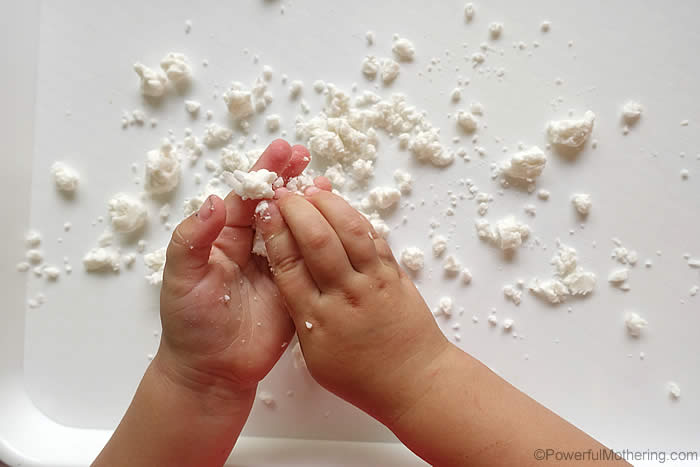
How to Store Homemade Sensory Dough
Your homemade sensory dough should be stored in an airtight container in a cool, dry place. Some doughs will last several weeks when stored properly, others might not retain their texture between play sessions.
Cloud Dough Recipe
If you’ve never made cloud dough before it’s actually pretty cool. Made from flour and vegetable oil, it takes on a fluffy texture that’s perfect for sensory play and exploration. The ingredients also make this recipe taste-safe compared to other cloud dough variations.

Even though it looks sticky, cloud dough doesn’t stick to hands during play. This cloud dough recipe also dyes well, perfect for a colorful play experience.
- How to make Cloud Dough Recipe
- Cotton Candy Cloud Dough
- Cloud Dough Construction Site Sensory Bin
- 3 Ingredient Taste Safe Cloud Dough Recipe
Fizzy Cloud Dough
This variation on cloud dough combines sensory play with a science lesson. Baking soda is added to the cloud dough recipe so kids can still play normally. Once they’re finished with the cloud dough, add vinegar to create a fizzy reaction.
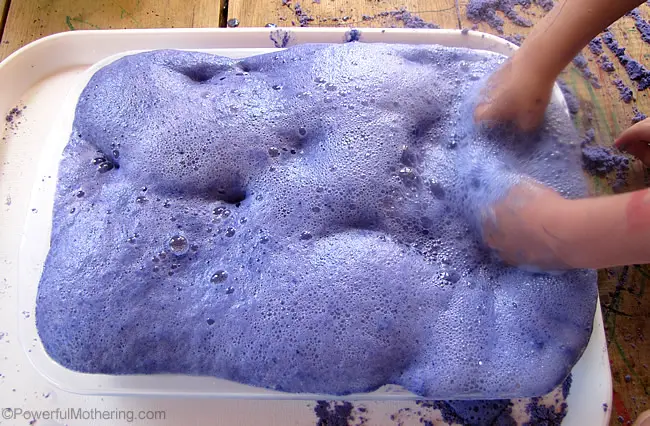
As the vinegar reacts with the cloud dough, kids get a whole new sensory experience to explore. It’s fun and messy, and a perfect addition to a science lesson or to change up your play routine.
- How to Fizzy Cloud Dough Experiment
- Rainbow Fizzy Cloud Dough
- Fizzing Heart Cloud Dough Experiment
- Fizzing Flag Sensory Play
Moon Dough
This moon dough recipe recreates the “Moon Sand” that you can buy at most toy stores. Unlike store bought products, though, it’s taste safe and can be made from ingredients you probably have in your kitchen already.

Moon dough is a great way to bring in some sandy fun when the weather is bad. Bring out small sand toys, cookie cutters, and little cups for kids to use while they pretend to be at the beach.
Snow Dough
You don’t need snow outside for your kids to enjoy playing in it. Homemade snow dough mixes the texture and look of snow without chilly fingers or risk of melting.

Yes, you can even make ‘snowballs’ with it! To play with snow dough, add some small toys to your sensory dough bin or help kids build their very own snowman.
Foam Dough
Foam dough is usually made with shaving cream but this recipe substitutes that for a more toddler-friendly alternative. It only has two ingredients and doesn’t take much effort to whip up.
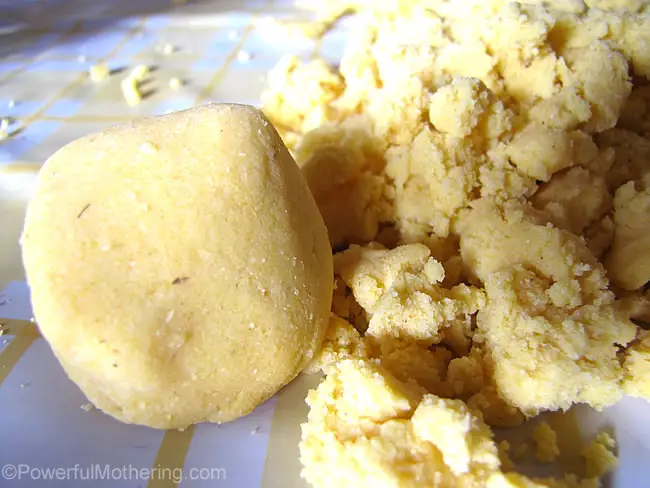
Kids of all ages will love the soft, fluffy texture of this foam dough. It can be crumbed up (a great sensory activity) and reformed into balls.
- How to Make Toddler Taste Safe Foam Dough
- Toddler Taste Safe Foam Dough Ice Cream Cones
- How to Make Foam Dough Fossils with Children
- Taste Safe Apple Foam Dough Recipe & Play
Salt Dough
Salt dough is easy to make and can be ‘set’ by baking it in the oven. With it you can turn a sensory play activity into a permanent craft without much effort. Make some creative salt dough play accessories, like a tea set, or use it to create DIY gifts for family and friends.
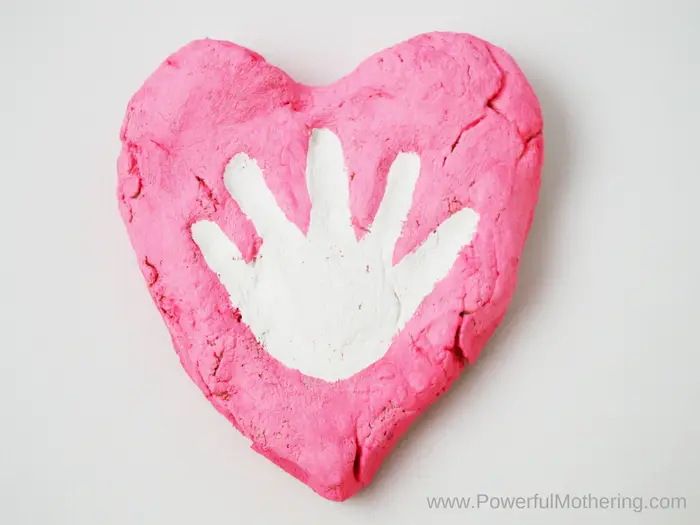
Free Printable Playdough Mats
Playdough mats can make learning more hands on and fun. Having the option to solve worksheets by forming playdough helps engage even the most reluctant learners.
We have plenty of free printable playdough mats that cover all kinds of early learning subjects and themes. They’re perfect for at-home enrichment, early childhood development, or homeschool activities.
Edible Peanut Butter Playdough
Peanut butter playdough is perfect if you want a sensory dough recipe that’s truly edible. Made with peanut butter and powdered sugar, it tastes almost as good as it looks! The texture comes out very similar to real playdough, so it’s an ideal alternative for young toddlers as a first sensory dough option.
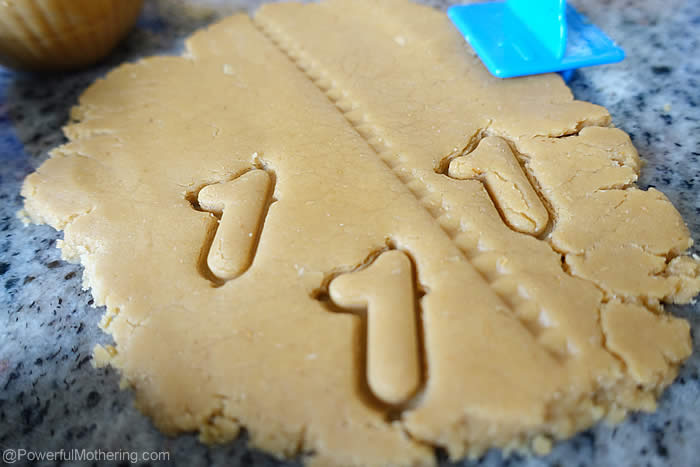
Obviously it should be avoided if you have kids with peanut allergies, but this playdough recipe is gluten free!
Scented Playdough
Adding scent to homemade dough adds an extra sensory experience to playtime. To keep this playdough taste safe, use naturally scented ingredients.
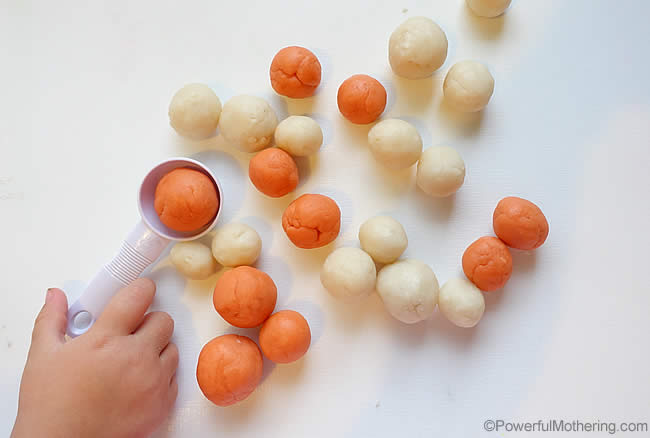
The way something smells can even change the way kids play with it. For example, coconut oil smells sweet and makes little ones think of tasty treats like ice cream. Encourage imaginative play by suggesting they open an ice cream shop or ‘bake’ up some sweet treats with their scented playdough.
No Cook Playdough
Making no cook playdough is a quick way to get a fun activity in your toddler or preschooler’s hands. Since it’s not made over heat, kids can help measure and mix this recipe with you. If you choose to add dyes, they can also knead the color into the dough for an extra sensory activity.
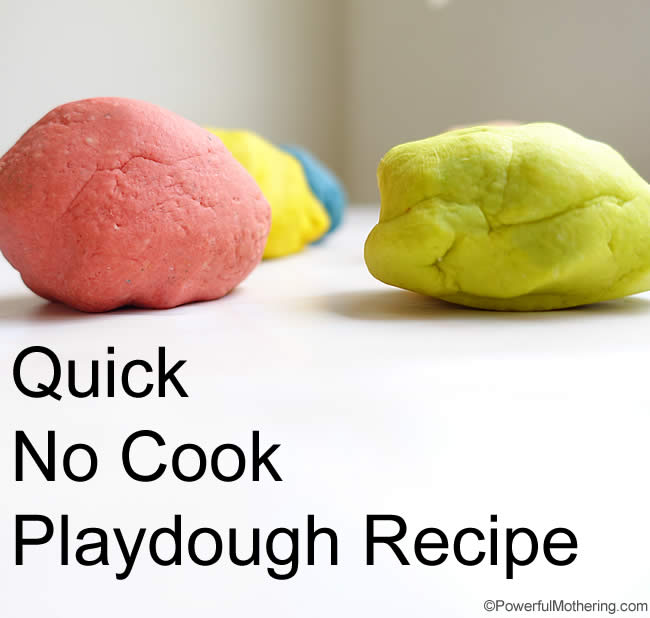
Cooked Playdough Recipe
Since it needs to be cooked on the stove, this type of playdough is best made for kids rather than with them. But, it’s also super quick and easy to make and doesn’t require kneading to mix. Cooked playdough is easier to get to the right consistency compared to uncooked playdough and lasts a little longer.

Homemade Playdough Recipe
There’s so many reasons to use a homemade playdough recipe over buying it from the store. First of all, it’s usually less costly than the store bought alternative. Second, you know exactly what’s going into your child’s sensory dough, which is necessary if they have allergies or your kids are still at the ‘taste everything’ stage. Homemade playdough is surprisingly easy to whip up with everyday ingredients.







